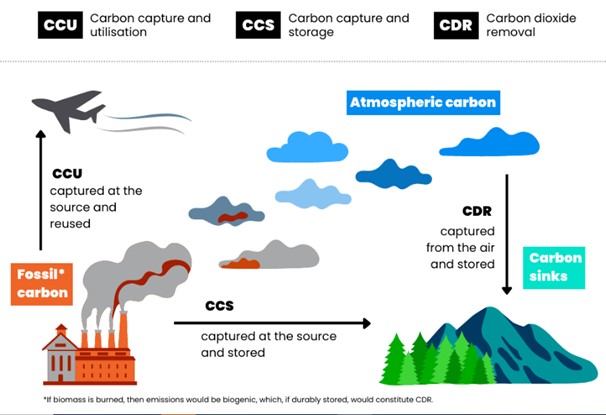900 319 0030
enquiry@shankarias.in
The draft decisions taken at COP28 at Dubai have referred to the abatement and removal of carbon emissions using carbon capture and storage (CCS) and carbon-dioxide removal (CDR) technologies.
CDR and CCS are distinct, but some CO2 removal methods (e.g., direct air capture) may share the same capture processes or long-term storage infrastructure used for conventional CCS.

Direct mitigation refers to reducing our reliance on fossil fuels with renewable energy sources like solar and wind power.
References